The great event of the pre-Revolutionary frontier was the 1774 Indian war known as Lord Dunmore’s War. Carman had been a soldier in that war in the division of the army personally commanded by Dunmore—the royal governor. Dunmore’s division had arrived too late at Point Pleasant to join in the victory there on October 10. Negotiations to formalize terms with the defeated Indians were just about to begin when Croghan’s men marched out of town a year later. They marched southeast along Braddock's old road toward Winchester, en route to the provincial capital at Williamsburg and an intended final destination at Suffolk. The unique story of Croghan’s company in 1776 has been told here already. After another missed rendezvous, they were reassigned to the 1st Virginia Regiment for the year. Carman died too soon to leave a narrative of his specific experiences in the war. None of his five messmates are known to have left a record either. (They were Michael Martin, Moses Martin, George Martin, Daniel Viers, and John McDonald.) It is likely that he crossed the Delaware with Washington on Christmas Day for the attack on Trenton. Though most were too ill after the Trenton adventure he may also have been at the battles of Assunpink Creek and Princeton in early January. United at last with the 8th Virginia in the spring, he was very likely at the Battles of Brandywine and Germantown. Muster rolls confirm he was present and healthy during this time. His Continental service concluded when his two-year enlistment expired near the end of the winter encampment at Valley Forge Meanwhile, back in Pittsburgh, the Indian peace broke down again and there was plenty to keep the militia (every fighting-age male) busy. An expedition across the Ohio under Col. Edward Hand failed about the time Carman was discharged. If Carman returned directly to Pittsburgh, he may have participated in one or both of the campaigns led by Gen. Lachlan McIntosh and Col. Daniel Brodhead in 1778 and 1779. Though Pittsburgh itself was on the frontier Colonel Brodhead reported in 1780, “The Emigrations from this new Country to the Settlements on Kentucke & the Falls [of the Ohio—later Louisville] are incredible….” Joseph Carman and his family were among the thousands of pioneers headed to Kentucky, though the date of their move could fall anywhere between 1778 and 1787.
They were ambushed there by a party of Indians—probably Shawnee—who fired on them. Van Cleve had a finger and part of the breech of his gun shot off. Though wounded, he and Robbins were able to escape. Carman was not so lucky. Van Cleve and Robbins raced to the settlements along the Bullskin Creek for help. Robbins then led a rescue party that set off after Carman and his captors. From the site of his capture they followed a trail of blood for about two hundred yards to the place where the Indians had been camping. There they found Carman’s body “dismembered and hung about on saplings. They gathered it up and took it back to Well’s Station, his home, for burial.” He may have been tortured, though the record doesn’t say and there may have been no way for his neighbors to know. Carman left behind a wife, Mary, and six children. Though little more than courage can be discerned from our sources about Joseph Carman’s character, the fact that one of his sons was named “Isaac Newton Carman” is intriguing. Carman's fate was not an unusual one at that time on the frontier. A final "peace" with the Shawnee would not be achieved until after William Henry Harrison's victory at Tippacanoe in 1811 and the collapse of Tecumseh's Confederacy following the Battle of the Thames in 1813. (Thanks to Duane Carter for sharing information about his ancestor.) More from The 8th Virginia Regiment
0 Comments
The regions beyond the Blue Ridge Mountains were ethnically and religiously different from the rest of Virginia. Soldiers, some of whom were occasional subsistence hunters, were typically better marksmen than the average soldier. Consequently, the used rifles instead of muskets (for the first year). Their motives for fighting were less focused on taxes and trade and more focused on their desire to head west--something the King had forbidden since 1763. Political geography has changed. All of these counties were later divided, some within months of the regiment's formation. West Virginia, which is not shown, was created in 1863 and would occupy the left-center of the map. The disputed northeast part of the Augusta District is now southwest Pennsylvania, including Pittsburgh. Western Fincastle County became Kentucky County in 1776 and the Commonwealth of Kentucky in 1792. Most Americans are unaware that beginning in 1774, Ohio and lands west of it were pulled into the Province of Quebec. This, technically at least, extended holdover French civil institutions to the border of settled Virginia. Quebec had no elected legislature and had been allowed to keep its Catholic institutions. Both facts were seen by Virginians as sure signs of creeping tyranny. The West Augusta District and Dunmore County each raised two companies. Augusta, Berkeley, Culpeper, Fincastle, Frederick, and Hampshire counties each contributed one. Initially called the "German Regiment" and long remembered that way, the map also shows how wide-ranging and diverse the zone of recruitment actually was. The lower (northern) Shenandoah Valley counties of Berkeley, Frederick, and Dunmore had significant German populations and all three field officers were from that area. Hampshire had a smaller German population. Culpeper, the only Piedmont county, had a smaller German population that descended from the Germanna Colony. The other counties were predominantly Scotch-Irish and English. To learn more about the individual companies, visit the Soldiers page. [Revised and Reposted from 9/1/19] More from The 8th Virginia Regiment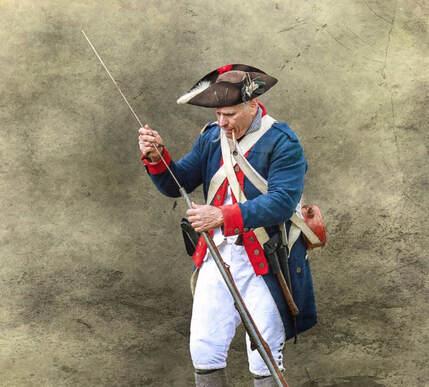 (Image: Randy Steele) (Image: Randy Steele) As an old man, Daniel Anderson wanted to spend his last years in prayer. He said he would “ever pray for the success and prosperity of his native state and country.” He would pray “to secure the liberties of which in his younger days he voluntarily encountered the perils of war and shed his blood in her service.” These were not platitudes. The bloodshed was real and there is no reason to doubt that his prayers were just as authentic. He was a humbled man. He was disabled by his war wounds and obliged to use the few resources he had caring for his wife and three physically and mentally handicapped adult children. Surprisingly, the unique contours of Anderson’s war service resolve a persistent question. The men of the 8th Virginia fought almost everywhere during the Revolution. I have sometimes described them as having served “from New York to Georgia,” but wished I could say “from Canada to Florida.” The regiment didn't range that far, but I have long suspected that some of its men did over the course of the war. The Florida question remains unsolved. In 1776, Maj. Gen. Charles Lee took the regiment south to attack the Tory haven at St. Augustine. They made it to Sunbury, Georgia before the expedition was called off. The malaria-stick regiment was posted there at Fort Morris, on the Medway River, for some time. Did they ever cross the St. Mary’s River into what was then the colony of East Florida? The governor of Florida reported in October of 1776 that “depredations were made by the Rebels as far [across the border] as Saint John River,” forcing him to commandeer a boat for defense. The main body of the 8th Virginia was probably gone by then, but had any of them gone scouting across the river before the raid? Quite a few men also remained behind to recover from sickness and some--like William Gillihan and Collin Mitchum--transferred to the 5th South Carolina Regiment. Did any 8th Virginia men participate in the foray to the St. John’s River that summer or fall? Probably. Maybe. We may never know. 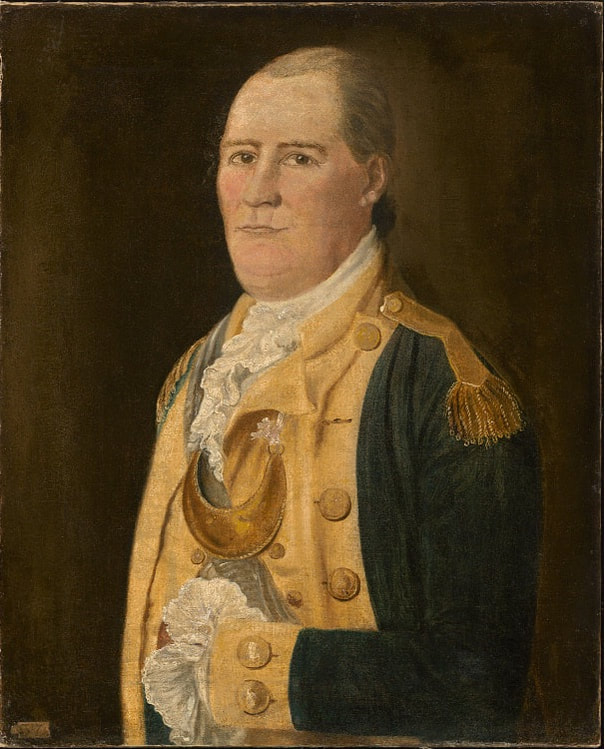 Daniel Anderson enlisted twice under Daniel Morgan, portrayed here in an anonymous portrait from about 1780. Daniel Anderson enlisted twice under Daniel Morgan, portrayed here in an anonymous portrait from about 1780. The Canada question, on the other hand, is now settled. The very first companies of Congress-authorized “Continental” troops included two companies of riflemen raised in the Shenandoah Valley in July of 1775. I have hoped to find just one 8th Virginia soldier who was in Capt. Daniel Morgan’s Frederick County company. But was there one? Yes. Daniel Anderson enlisted in Morgan’s rifle company in July of 1775 and was with him at Boston and the attack on Quebec. He was wounded at Quebec in the chest and the right arm, captured, and held prisoner for months. He was eventually exchanged and then discharged at Elizabeth, New Jersey. In February 1777 he enlisted again under Morgan, who was now the colonel of the 11th Virginia. There is no record of Anderson in the 11th Virginia rolls, however, because he was promoted to sergeant and transferred into Capt. Thomas Berry’s company of the 8th Virginia. Anderson was with the 8th through Germantown, Whitemarsh, Valley Forge, and Monmouth. He was discharged on February 2, 1779. He then received a state commission as a lieutenant in the Western Battalion of Virginia state troops (state regulars—not militia and not Continentals), probably fighting Indians as far west as Indiana under Col. Joseph Crockett. Other 8th Virginia men were on the frontier as well, serving as far west as Illinois. After the war, Anderson settled in Shenandoah County, Virginia and lived the rest of his life there. So what can we claim for the length and breadth of the regiment’s service? “From Canada to Florida” is still a stretch beyond what we can prove. To the Florida line? Still too far. Until we can prove more, we’ll have to settle for “From Canada nearly to Florida.” Can we also say, “From the Atlantic to the Mississippi?” Not yet, but it’s entirely plausible. Regardless, the range of the 8th Virginia’s men is impressive. Almost all of that movement was covered on foot. In retirement, Daniel Anderson’s wounds kept him from performing hard labor—even the work of a subsistence farmer. Still, he somehow had to support his wife and three disabled children. “I am by occupation a farmer,” he said in 1820, “but owing to wounds and age I am unable to follow it. I have my wife living with me, aged 57 years; 1 daughter, aged 23 years, a cripple; and two dumb children, both simple, one a girl aged 14 the other a boy aged 27. The reason for his older daughter’s disability was her being “so much afflicted with Cancers that she has not been out of the house for 16 months.” The word "dumb" in those days still meant "mute." "Simple" meant intellectually disabled. There were no federal pensions yet, but he applied to the Virginia legislature for pension on the basis of his own service-connected disability. He made his case before a judge. His conclusion was recorded by the court in the third person: “The prayer of your petitioner therefore is that your honorable body will pass an Act allowing such pension as in your wisdom you may deem sufficient to enable him to end his few remaining days in praying, as he will ever pray for the success and prosperity of his native state and country to secure the liberties of which in his younger days he voluntarily encountered the perils of war and shed his blood in her service.” The date of his petition isn’t shown, but it was supported by notes from doctors and a letter from Daniel Morgan in 1796: “The bearer of this Dan’l. Anderson Inlisted a soldier with me in the year 1775 march’d with me to Boston & from thence to Quebec – was with me in the storm of the garison, on the last Day of Dec’r. when Gen;l Montgomery fell. He Rec’d two wounds in the action, one in the Breast & one in his Arm which Doctor senseny & Doctor Balwin certyfies that said wounds has so disabled him as to Rendered unfit for Hard Labour & thinks Him a proper object for a Pension.” "Doctor Balwin" was Cornelius Baldwin, the former surgeon of the 8th Virginia. Anderson received his state pension and later received federal support as well. He died on November 6, 1840. UPDATE: Thanks to Carolyn Brown Butler who alerted us to the pension of her ancestor William Smith. Smith, after his time in the 8th, served under George Rogers Clark and (former 8th VA captain) George Slaughter. He was sent by Clark as an express rider to the Iron Banks, six miles below the mouth of the Ohio on the Mississippi. So now we can say that at least one 8th Virginia man served from "the Atlantic to the Mississippi." More from The 8th Virginia RegimentThere is no dignity in being forgotten. A case in point is Virginia Lt. Col. Richard Campbell, a Continental officer who died bravely for his country but lies today in an unmarked grave far from his home. “Killed near the end of the battle at Eutaw Springs,” wrote the authors of a 2017 study of that battle, “he is virtually unknown today.” In his own day, however, Nathanael Greene called him a “brave, active, and intrepid Soldier.” Light Horse Harry said he was an “excellent officer” who was “highly respected and beloved.” In 1832 one of his soldiers still remembered him as “the brave Col. Campbell.” Dick Campbell, as he was known, deserves to be remembered. Little is known of his early life. Historian Louise Phelps Kellogg asserted a century ago that he was “a distant relative of the Campbell family of southwest Virginia.” This would tie him to militia Gen. William Campbell, a leader at the Battle of King’s Mountain. He was evidently born in Virginia about 1730 and raised in Dunmore (now Shenandoah) County, where he was appointed a sheriff’s deputy in 1772 and reappointed in 1774. The Shenandoah Valley was culturally distinct from the eastern parts of Virginia. Many of Campbell’s neighbors were Germans who had migrated from Pennsylvania.
More from The 8th Virginia Regiment |
Gabriel Nevilleis researching the history of the Revolutionary War's 8th Virginia Regiment. Its ten companies formed near the frontier, from the Cumberland Gap to Pittsburgh. Categories
All
Archives
June 2024
© 2015-2022 Gabriel Neville
|
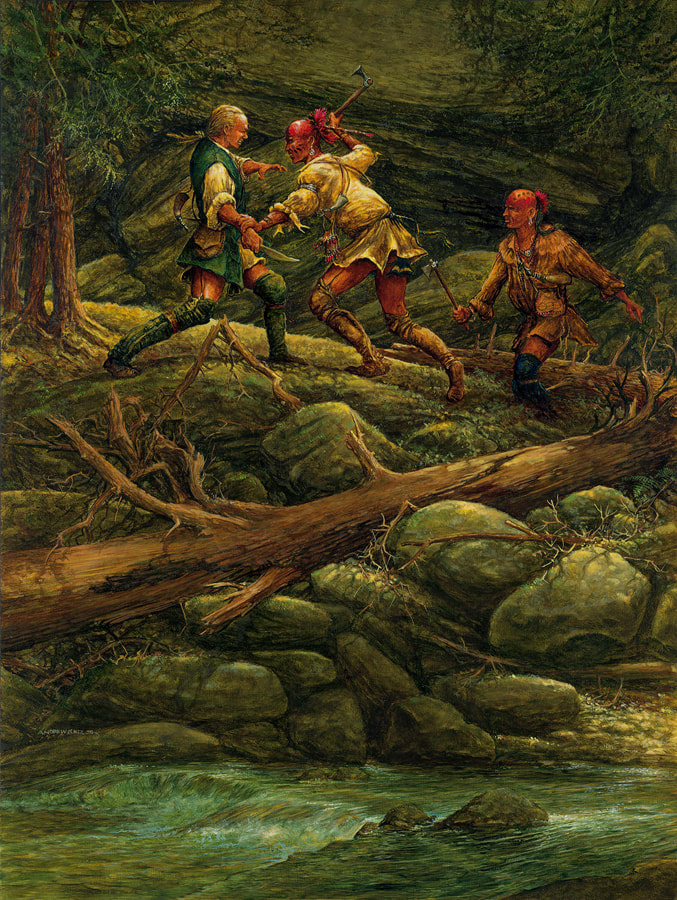
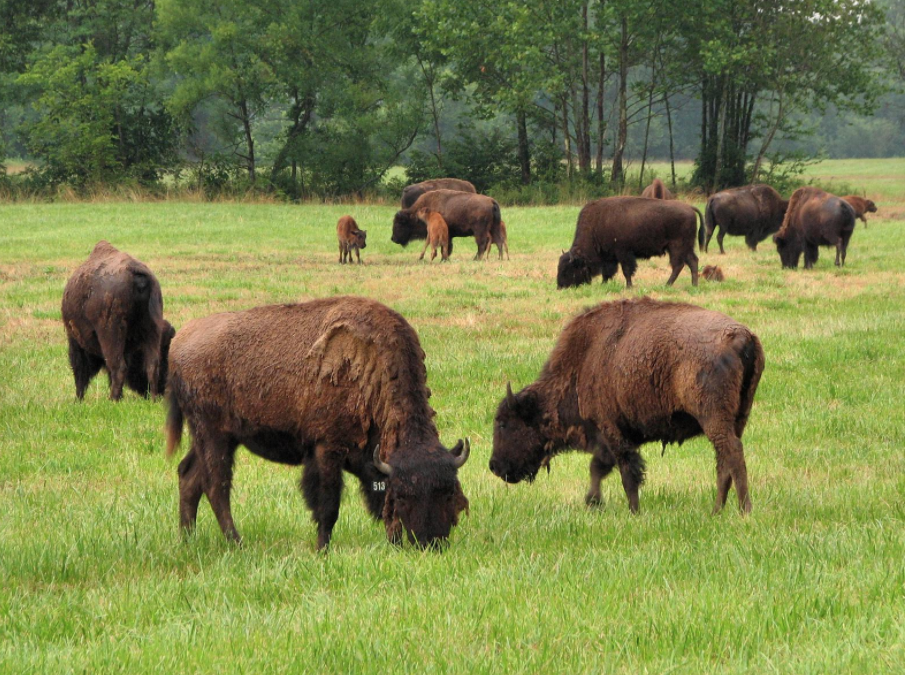

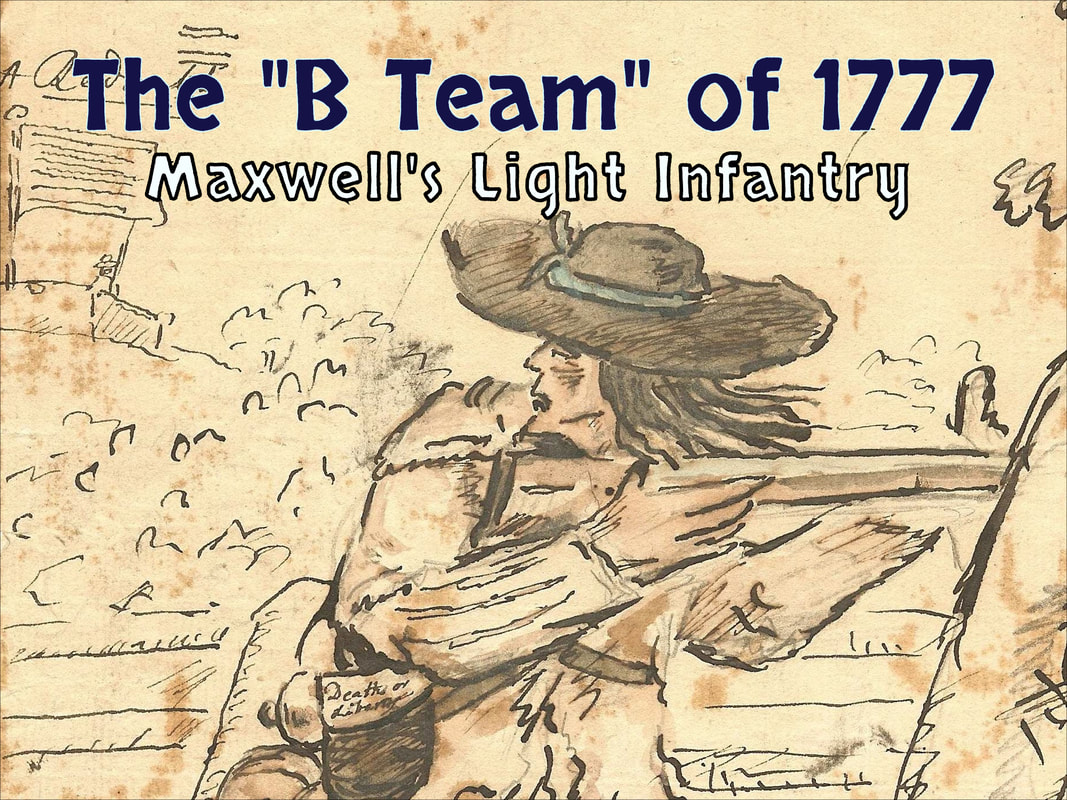
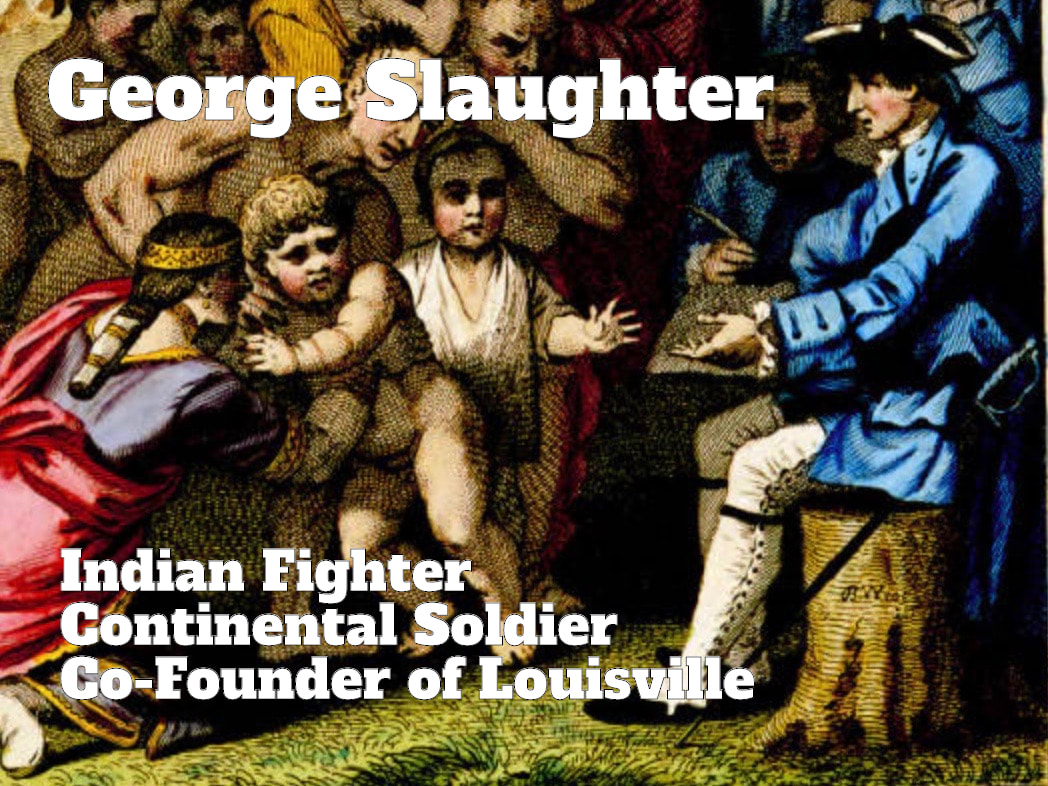
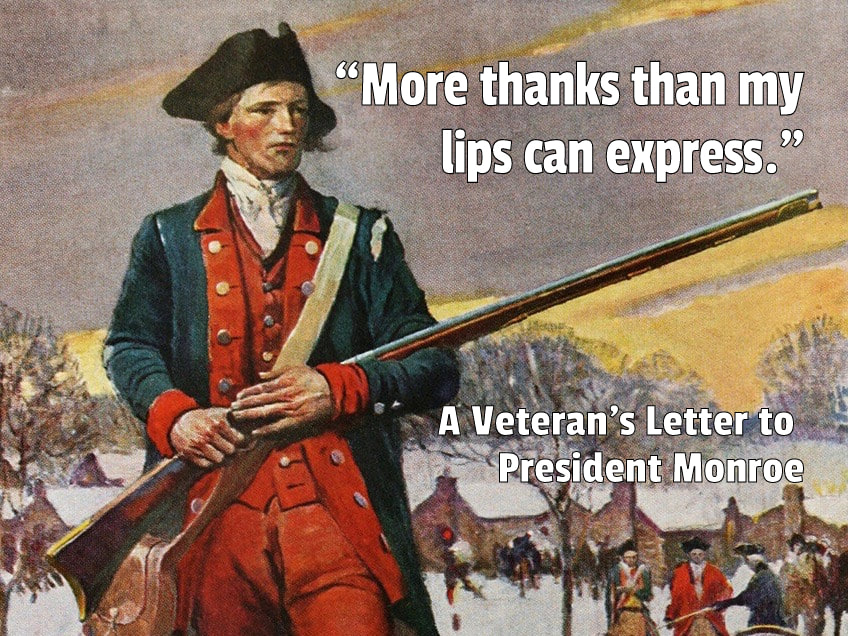
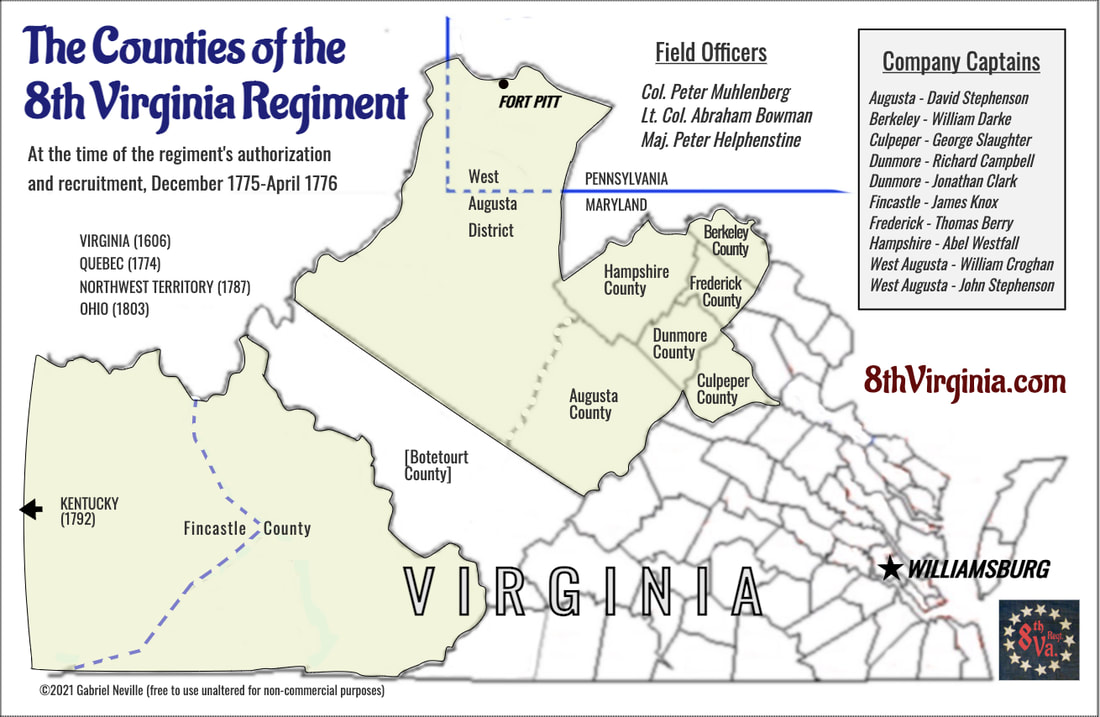
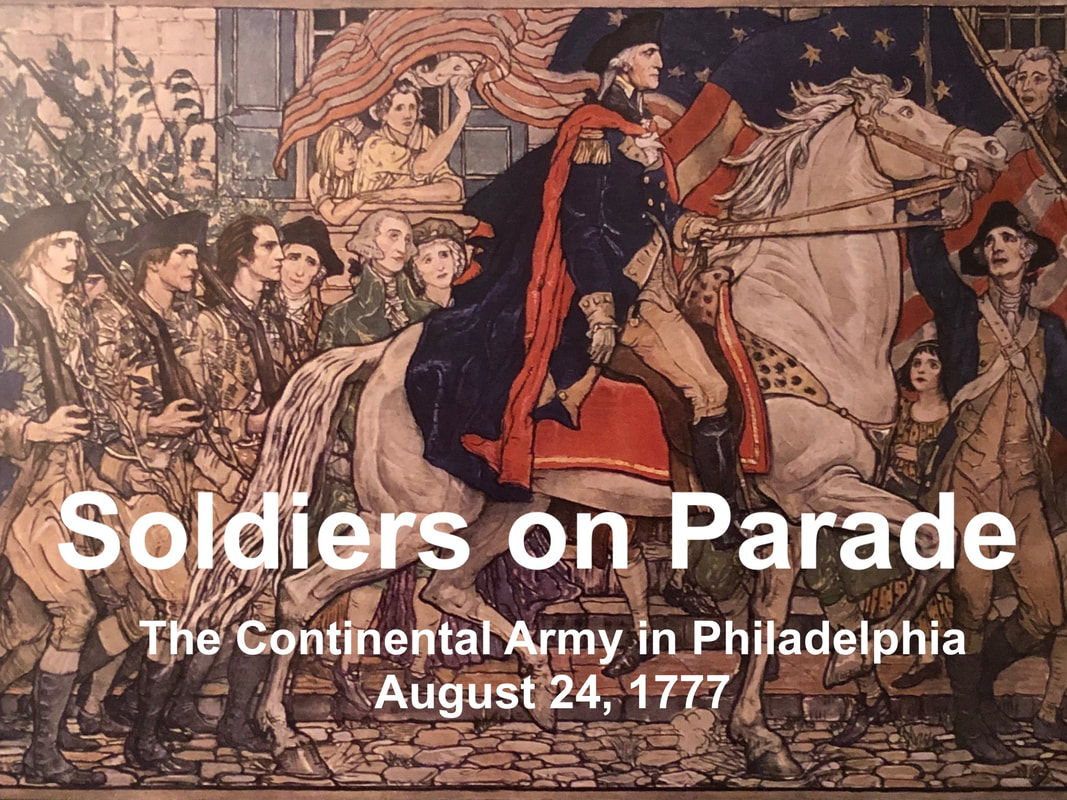
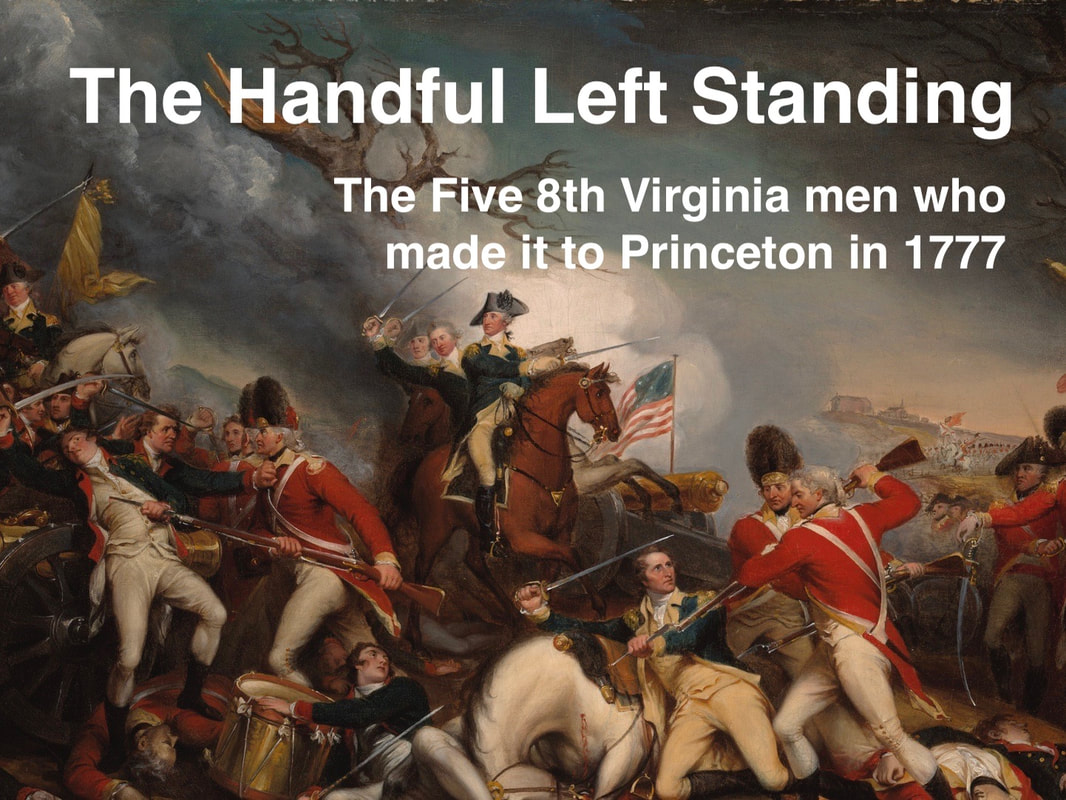
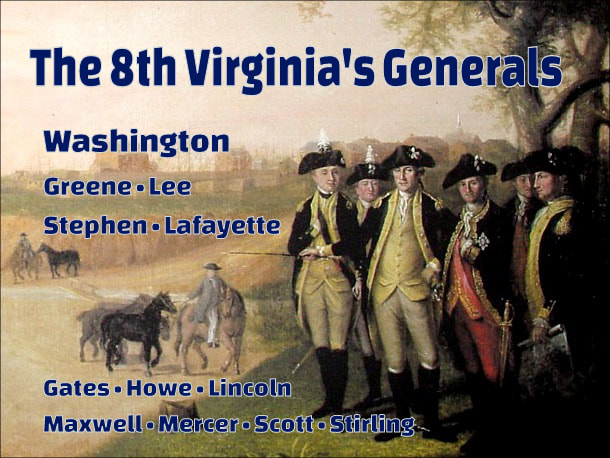
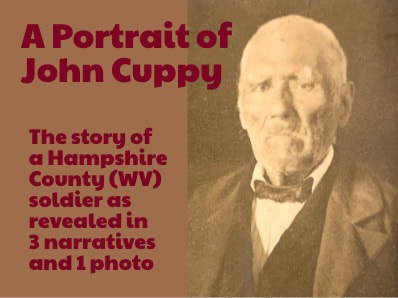
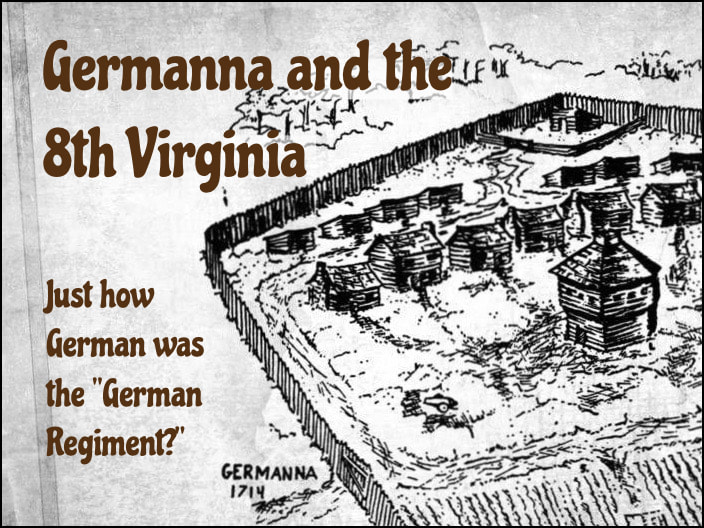
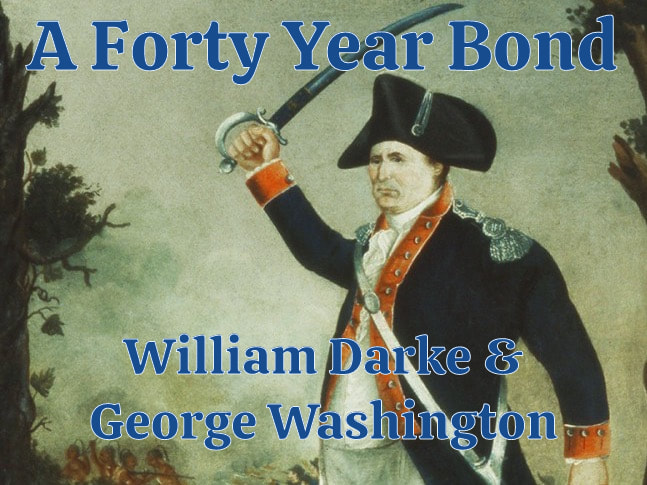
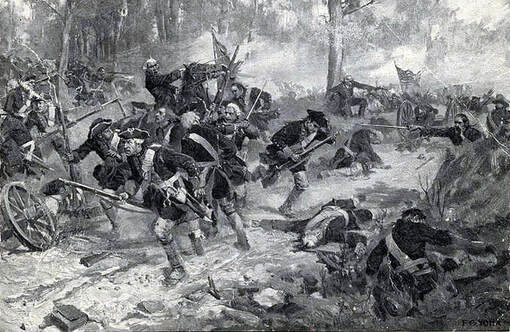
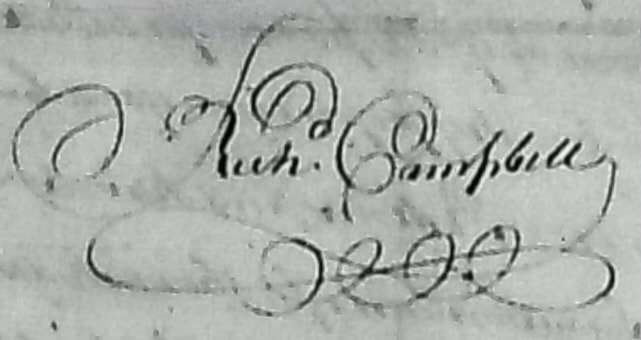

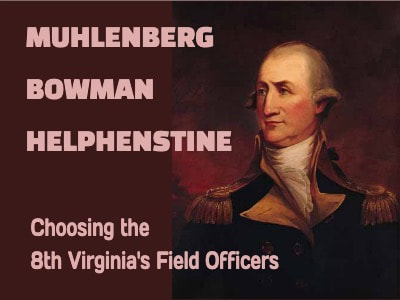
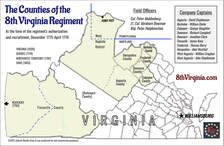
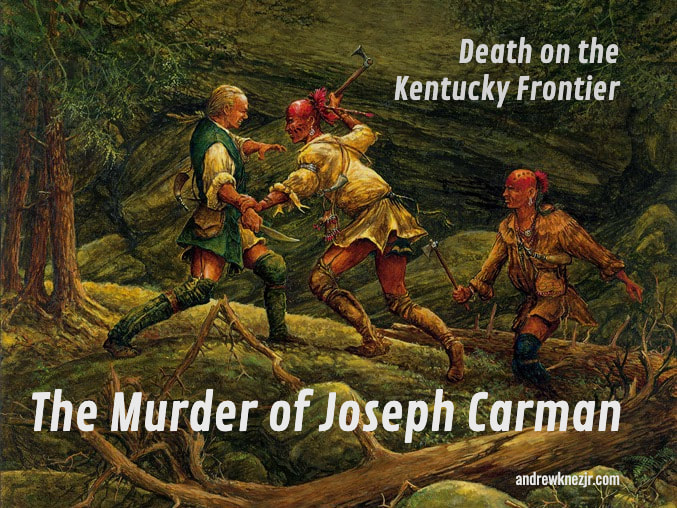
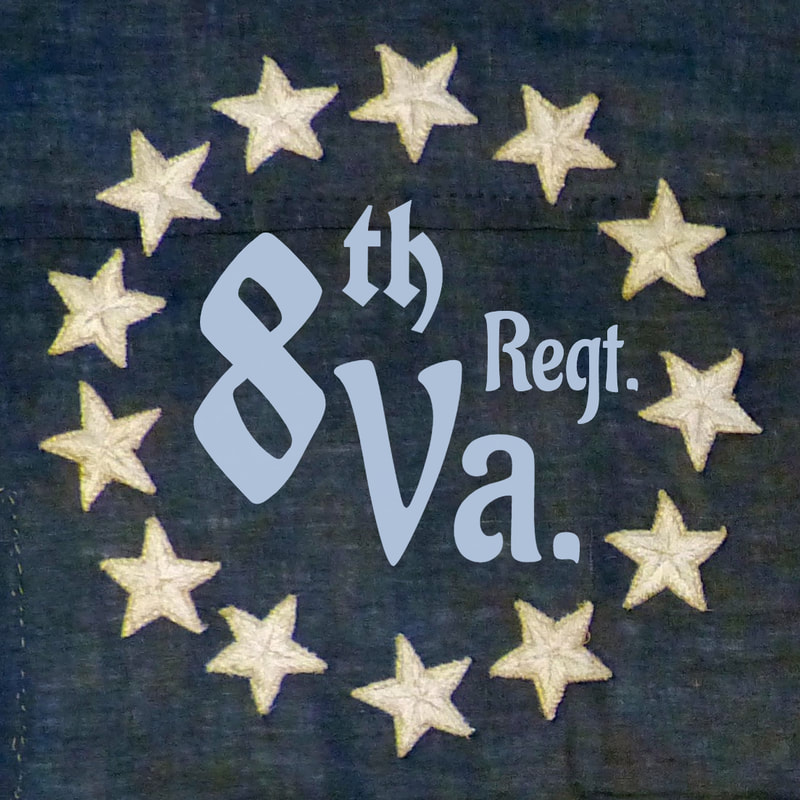
 RSS Feed
RSS Feed